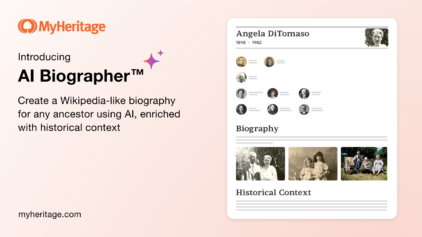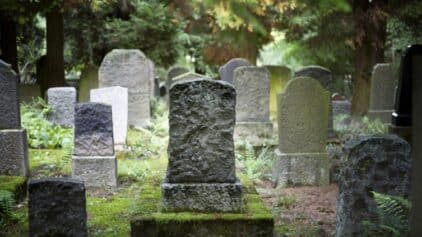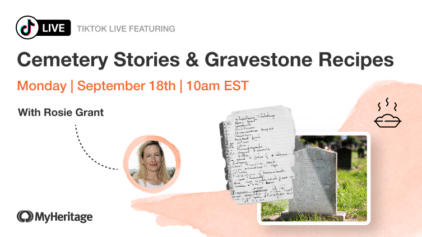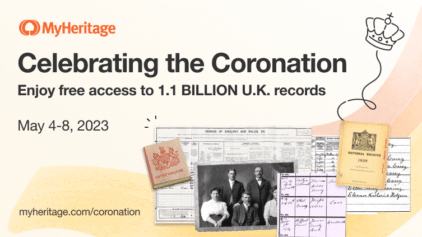Thanks Betty!


Genealogy research defines taking the road to discovery. There are traffic lights, stop signs, many turnings, and cars stuck in traffic. In the country, narrow lanes are fringed with trees, obscuring views of towns, few cars and dead ends. Highways have slippery curves, rest stops and fast-moving vehicles, while exits lead to other byways or tollbooths! Sometimes we may have a map, while at other times, we are in uncharted territory.
MyHeritage’s US genealogy advisor Schelly Talalay Dardashti wrote this piece back in 2003 for a newspaper column. It has been adapted from the original version, but the journey remains the same in 2012 and beyond.
LIGHTS
Red lights stop us cold. We happily track Great-Great-Grandfather Jonathan or Great-Aunt Susanna until the trail suddenly ends. To learn more about these enigmatic souls, we must take the next turn to study historical events in an obscure village.
Green lights get us going again, as Jonathan pops up in a memorial book, or when a Bulgarian expert posts a list of names from a recovered document and Susanna is there.
Yellow lights remind us to be cautious, to look carefully, as when we search for Abe Cohen in the Ellis Island Database, and find thousands of similarly-named individuals over decades of arrivals.
MAPS
If we’re lucky, older family members have provided important names, dates, locations and photographs.
We can follow these clearly marked facts around the world as if we had a personalized map from the auto club.
Often, we must create our own maps from discovered details as we travel along.
VIEWS
When we begin our trip on the road to discovery, sometimes we can’t see the proverbial forest for the trees.
What we’re looking for is surely in there somewhere, but we don’t even know what questions to ask, what information we may already have, what we hope to discover, or what we really want to know.
The forest of resources is filled with records concerning immigration, citizenship, birth, death, marriage, legal, military and property records, to name a few. What is it we really want?
Do we need to know when cousin David arrived in Springfield, Massachusetts, or where our presumed cousin Daniel is buried, pre-1948, in Israel? Did David’s will list all his “missing” children? Will the Ohio marriage license of Robert and Sarah list the first names of their parents, who did not immigrate? Will a line-by-line examination of unindexed passenger arrival manifests reveal when Grandpa landed in Canada?
Like a country lane in summer, green leaves may obscure the view. We may see a tantalizing glimpse of a village. In trying to reach it, we may find a direct path or a dead end, having to back up and turn around to find another way.
SLIPPERY CURVES
Are we sure that Mogilev is in Belarus or should we be looking for Mogilev Podulsk? We must slow down and check the facts, before jumping to conclusions. If Grandma said they lived near the Dnieper River, we know we’re looking for Belarus. And if she called the place Molyeh, where do we look?
Where do we go for records of the Ottoman Empire? Can we trace a family from Spain to Turkey to Miami, Florida? Can we link a Spanish Crown of Aragon archival document dated June 1358 to a family in Belarus with the same very rare name and a tradition of Spanish Sephardic origin?
REST STOPS
When the forests of files and rivers of references overwhelm us, we need to take a rest stop. Get out, walk around, catch our breath and relax. We spread out our gathered information, see where we are, where we have to go. We sort documents, identify photos, and step back from everything to process and comprehend what the piles of files really indicate. It’s not unusual for researchers to let things go for weeks or months, and then resume the search.
When researching large well-documented cities, we meet numerous researchers and share information and problems. The traffic is heavy and many of us are going in the same direction.
If, however, we’re looking for that tiny dot on the Belarus map of the Vorotinschtina agricultural colony and its just-across-the-road tiny village (a store or two and a post office) of Zaverezh’ye, the dirt road barely sees a car or even a wagon. Fellow researchers are few, and sharing becomes even more essential.
With limited available resources and so few families, each tiny detail is important to all of us.
DETOURS
Perhaps a bridge collapses, or a landslide blocks the road. We must find a way around the obstacles. With the direct route closed, we must find resources which lead us around the obstruction.
DIRECTIONS
Genealogy today is all about sharing, asking for and receiving help from many sources. The worldwide genealogy community believes in sharing information, making resources available and providing accessible records. We are all concerned with discovering and preserving resources for future generations.
I receive numerous queries about specific towns or records. I forward them to those who specialize in those areas. No single researcher can be expected to know everything about everywhere, so people tend to specialize.
TOLLBOOTHS
Genealogy has tollbooths. Not everything is free, unfortunately.
Reference books are necessary, and we attend genealogy conferences around the world to learn more.
Our road trips are helped by acquiring the proper equipment needed to travel down discovery road.
A ROAD TRIP
The road to discovery is exciting.
It may be a drive in the country, or a bumper-to-bumper experience, but it is always fascinating.
When will you begin your journey?
——————————————
Did you enjoy this piece? How do you feel about your own journey down discovery road? Share your comments below.











Betty De Leon
December 18, 2012
I loved reading your blog. My journey has been a wonderful experience. I hope my grandchildren will someday enjoy their trip through history as much as I’ve enjoyed looking up the roots of the family my husband and I have combined. Thank for your thoughts.